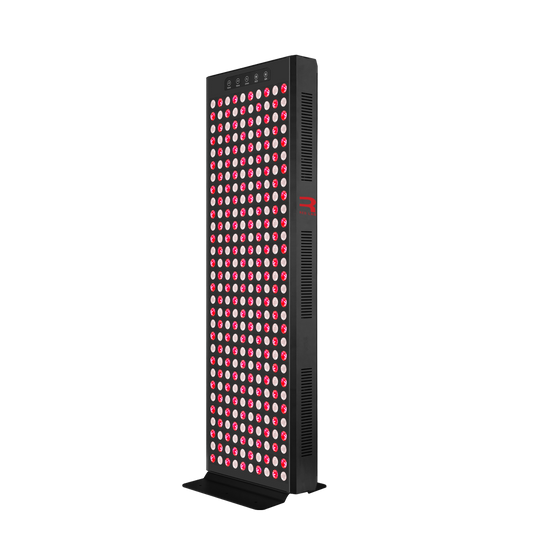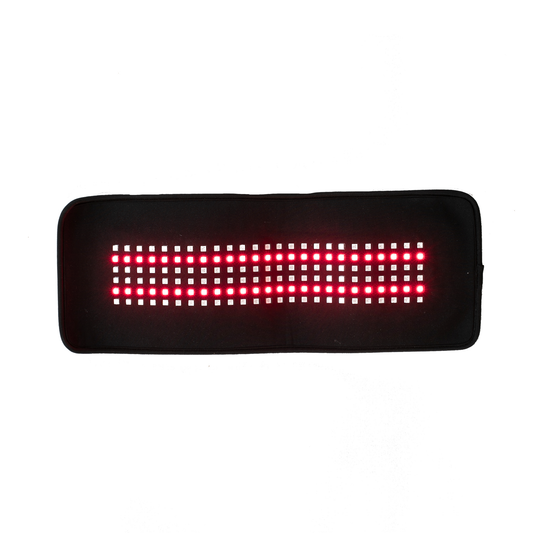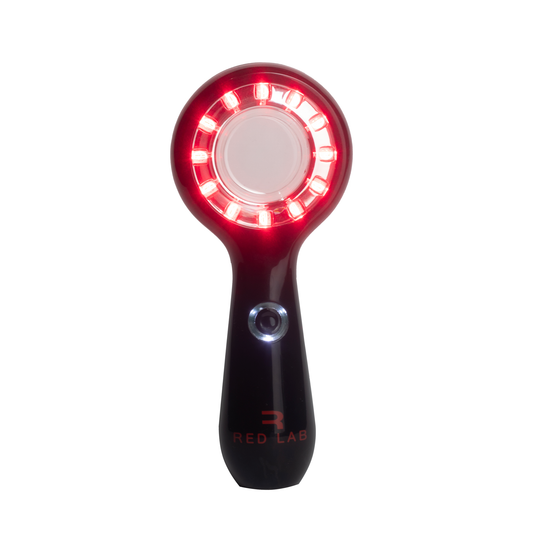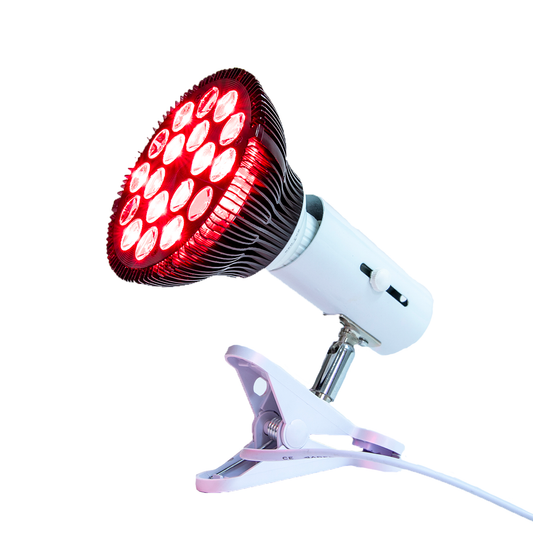Can Red Light Therapy Improve My Skin?
The positive effects of Red Light Therapy on our skin are widely studied with resoundingly positive results. The results indicate that it’s primary benefit is its ability to stimulate collagen production to create softer, fuller, smoother, and more elastic skin. Collagen is the body’s bandage: this protein is used to repair and rebuild skin. Increased collagen production also reduces the size of pores, and reduces fine lines and wrinkles. Red light therapy is a great way to tighten your skin, treat skin conditions, and promote overall health and vitality. The full spectrum of light can be beneficial, depending on your current skin and goals. But for optimal results make sure to include red and possibly near-infrared light in your normal skin care therapy routine.
Not just for how you look, but for your entire health as well, taking care of your skin is essential. Everything from immunity to hormone balance to body temperature is greatly influenced by the skin. A high-quality Red Lab gadget can be used for red light therapy treatments that help improve cellular activity and encourage better skin all over your body. In this post, we discuss the significance of skin health and provide an overview of the benefits of red light treatment for your skin.
Why is Skin Important for Overall Health?
When we think of our organs, we think of working parts deep in our body, however we often forget that skin is our largest organ, and it’s the first line of defense for our immune system. The skin also plays a central role in key bodily processes like blood circulation, hormone production, and temperature control. Here’s a look at some of the most important functions of the skin:
Circulation and Repair: Skin is central to our circulatory system, and good blood circulation is needed for healthy skin and general well being. Blood flow brings oxygen and nutrients to the skin, and removes carbon dioxide and waste products. When organs are damaged, circulating blood delivers proteins and cells needed for repair. [1]
Storage and Hormone Production: The lower layers of our skin are essential for the storage of water, fat, and metabolic products. Our skin also produces key hormones such as Vitamin D, which is made with exposure to light. Red Light Therapy provides this light in a required dosage without having to expose our skin to the harmful cancer generating UV-rays present in regular sunlight. [2]
Temperature Control: Your skin plays a crucial role in controlling your body's temperature by shielding you from the cold or heat and retaining moisture. [2]
Protection and Immunity: The skin is our protective layer, keeping out the dangers of the world. It shields us from the dirt and debris that we can see, and from invisible invaders like germs and diseases. Skin is the essential first component of a healthy immune system, fighting off risks from allergens, toxins, and carcinogens. [2]
Beauty: Compared to the other essential functions of our skin, appearance shouldn't logically be our main priority, but it just is, skin cosmetic items are a huge industry around the world because we all want healthy looking, beautiful skin. Skin is central to how we perceive ourselves, and how others view us, which affects self-esteem and mental health every day.
How does Red Light Therapy aid skin health?
Red light therapy, also known as photobiomodulation (PBM) or low-level laser therapy (LLLT), is a simple, non-invasive treatment that delivers wavelengths of red and near infrared (NIR) light to the skin and cells.
Red light therapy works by enhancing cellular function. Wavelengths of red and NIR light have been shown to stimulate the mitochondria, the energy providing powerhouse of the cell. A study published in Seminars in Cutaneous Medicine and Surgery states that mitochondria in the skin cells absorbs red light and supports the production of more adenosine triphosphate (ATP), stimulating the synthesis of pro-collagen, collagen, basic fibroblast growth factors (bFGF), and proliferation of fibroblasts, this keeps cells functioning at a high level for longer before dying away. [4] Red light therapy treatments are quick and easy, at about 10 minutes per side per session, allowing a person to supplement the healthy wavelengths of sunlight they get from their environment with specific wavelengths of red and NIR light.
Our bodies work and look better, when our cells are in a state of balance, or homeostasis. Red and NIR light promotes balance across the body by enhancing the cellular environment, making energy production more efficient, with less inflammation and oxidative stress. When your cells are in greater balance, your skin will look & feel softer and more invigorated. [5] That inner balance is ideal for outer beauty.
Other ways in which Red Light Therapy supports Skin Health
Red Light Therapy and Inflammation: Inflammation can wreak havoc on skin health and appearance. In addition to supporting cellular health, red light therapy, combined with a healthy lifestyle, has been shown to have a positive impact on inflammation. [6]
A renowned expert on light treatment studies is Dr. Michael Hamblin from Harvard Medical School. Red light therapy may lessen oxidative stress and improve blood flow to injured and inflammatory tissues, according to research by Dr. Hamblin. By lowering inflammation and promoting biological equilibrium, this can hasten the regeneration and healing of skin tissue. [6,7]
Why Use Red Light Therapy for Full-Body Skin Health?
Red light therapy was mostly used in high-end salons and spas for skin treatments. Thanks to innovations in LED technology, red light therapy is now accessible at a far more reasonable price. The skincare community has taken notice; many of the world’s leading skin experts trust and recommend Red Light Therapy as an integral part of their skincare routine.
Full-Body Skin Health: Your face gets the most attention, but skin health doesn’t end at the neck. Exposing more of your skin and cells to red and NIR light will have a greater effect on your overall health. The more of your skin you can expose to healthy wavelengths of light, the more energy you can produce, which translates to better overall health. Red Lab makes use of full body banks of lights, allowing for just 20 minute sessions to cover the back and front of your body for the full amount of possible energy consumption recommended for healthy and vibrant skin.
Balance is about your whole body working together as a system, so you’re going to see better results treating more of your skin with red and NIR light. It may seem counterintuitive, but giving the skin on your legs and back the light they need can have just as much effect on how your face looks and feels as doing targeted facial treatments. True health and beauty is a full-body phenomenon.
Using red light therapy, your skin care regimen will improve.
Your complete health depends on having healthy, vibrant skin. Immunity, circulation, hormone synthesis, temperature management, and self-esteem all depend on healthy skin. More than just your face needs to be taken care of, thus receiving enough healthy light and leading a balanced lifestyle are essential. Your entire body's skin can benefit from red light therapy's ability to reduce inflammation and enhance skin health.
Sources and References:
[1] “Circulation & Skin Integrity: Importance, Risk Factors & Examples.” Study.com. Feb 2017.
[2] “How does skin work?” Institute for Quality and Efficiency in Health Care. Sept 2009, updated 2019.
[4] Karu T, Pratibrat L, et al. “Effects of Monochromatic Low-Intensity Light and Laser Irradiation on Adhesion of HeLa Cells in Vitro” Lasers in Surgery and Medicine. 1996.
[5] R Stout and M Birch-Machin. Mitochondria’s Role in Skin Ageing. Dermatological Sciences. 2019 May.
[6] Avci P, Gupta A, Sadasivam M, Vecchio D, Pam Z, Pam N, Hamblin MR. Low-level laser (light) therapy (LLLT) in skin: stimulating, healing, restoring. Semin Cutan Med Surg. 2013 Mar.
[7] Hamblin M. “Mechanisms and applications of the anti-inflammatory effects of photobiomodulation.” AIMS Biophys. 2017.




